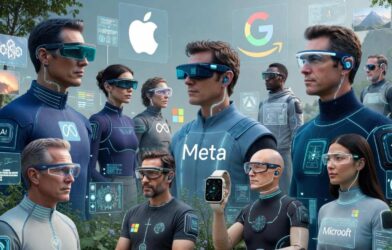Today, where users are bombarded with a vast array of content and options, businesses are continually seeking ways to stand out and engage their audiences effectively. One of the most compelling strategies emerging in recent years is real-time personalization.
This technique involves tailoring content and interactions to individual users based on their current behavior and preferences. But what exactly is real time personalisation, and how does it work? This article delves into these questions and explores how this dynamic approach is reshaping user experiences across various platforms.
Understanding Real-Time Personalization
Real-time personalization refers to the practice of adapting and customizing digital content and interactions instantaneously based on individual user data. Unlike traditional personalization, which often relies on historical data and predefined user segments, real-time personalization uses immediate user inputs, such as browsing behavior, search queries, and social media activity, to provide a tailored experience.
This approach aims to create a more relevant and engaging experience for users by delivering content, recommendations, and offers that align with their current needs and preferences. By doing so, businesses can enhance user satisfaction, increase engagement, and ultimately drive conversions.
The Mechanics of Real-Time Personalization
Data Collection
The foundation of real-time personalization lies in data collection. To deliver personalized experiences, businesses must gather and analyze data from various sources. This data can include:
- User Behavior: Actions such as clicks, page views, and time spent on specific content.
- Search Queries: Keywords and phrases users enter in search engines or on a website.
- Social Media Activity: Likes, shares, comments, and interactions on social media platforms.
- Geolocation Data: Information about the user’s location, which can influence relevant content and offers.
Data Processing
Once data is collected, it needs to be processed and analyzed to extract meaningful insights. Real-time analytics tools play a crucial role in this stage. These tools use algorithms and machine learning models to interpret user data and identify patterns and trends. For example, if a user frequently searches for travel-related content, the system can infer that they might be interested in travel deals and recommendations.
Personalization Algorithms
Personalization algorithms are the heart of real-time personalization. These algorithms use the processed data to determine the most relevant content or offers for each user. Some common algorithms used in real-time personalization include:
- Collaborative Filtering: This algorithm suggests content based on the behavior of similar users. For example, if users with similar interests frequently purchase certain products, those products may be recommended to new users with similar profiles.
- Content-Based Filtering: This method recommends content based on the attributes of the items a user has interacted with. For instance, if a user frequently reads articles about technology, they might be shown more technology-related content.
- Contextual Recommendations: These recommendations are based on the current context, such as the user’s location, device, or time of day. For example, a user browsing a restaurant website might receive different recommendations based on whether they are searching from home or on the go.
Real-Time Delivery
The final step in the real-time personalization process is delivering the tailored content or offer to the user. This requires an efficient and responsive system that can update content instantly based on the user’s actions. Technologies such as content management systems (CMS) and marketing automation platforms are often used to facilitate real-time delivery.
For example, an e-commerce website might display personalized product recommendations on the homepage, update offers based on the user’s browsing history, and provide real-time chat support based on the user’s current activity.
Benefits of Real-Time Personalization
There are numerous advantages to real-time customisation for both individuals and organizations.
- Enhanced User Experience: By providing relevant and timely content, businesses can create a more engaging and enjoyable user experience. This increases the likelihood of users returning to the site and interacting with the content.
- Increased Engagement: Personalized experiences can drive higher engagement rates, as users are more likely to interact with content that aligns with their interests and needs.
- Higher Conversion Rates: By presenting users with offers and recommendations that are relevant to their current behavior, businesses can increase the chances of conversion, whether that’s making a purchase, signing up for a newsletter, or completing a form.
- Improved Customer Retention: A personalized experience can foster a stronger connection between users and a brand, leading to higher levels of customer loyalty and retention.
Challenges and Considerations
While real-time personalization offers many advantages, it also comes with its challenges:
- Data Privacy: Collecting and processing user data raises privacy concerns. Businesses must ensure they comply with data protection regulations and provide users with clear information about how their data is used.
- Data Quality: Real-time personalization’s efficacy depends on the reliability and correctness of the data gathered. Poor-quality data can lead to irrelevant recommendations and a negative user experience.
- Technical Complexity: Implementing real-time personalization requires sophisticated technology and infrastructure. Businesses must invest in the necessary tools and resources to manage and analyze data effectively.
Future Trends in Real-Time Personalization
As technology continues to evolve, real-time personalization is expected to become even more advanced. Some future trends include:
- Artificial Intelligence (AI) Integration: AI and machine learning will play an increasingly important role in enhancing real-time personalization. These technologies can improve the accuracy of recommendations and predictions by analyzing complex patterns in user data.
- Omnichannel Personalization: The integration of personalization across multiple channels, such as websites, mobile apps, and social media, will provide a more seamless and cohesive user experience.
- Predictive Personalization: Leveraging predictive analytics to anticipate user needs and preferences before they explicitly express them will further enhance the effectiveness of real-time personalization.
Embracing Real-Time Personalization
Real-time personalization is a powerful tool that allows businesses to deliver highly relevant and engaging experiences to their users. By leveraging data collection, processing, and personalization algorithms, businesses can tailor content and interactions to individual preferences in real-time.
While challenges such as data privacy and technical complexity exist, the benefits of real-time personalization—enhanced user experience, increased engagement, and higher conversion rates—make it a valuable strategy for businesses seeking to stay ahead in a competitive digital landscape.
As technology continues to advance, the future of real-time personalization promises even more sophisticated and impactful applications, further transforming how users interact with digital content.
Read More Articles: Businessexchanged.com













